1. Roaring Run Resort, Pennsylvania
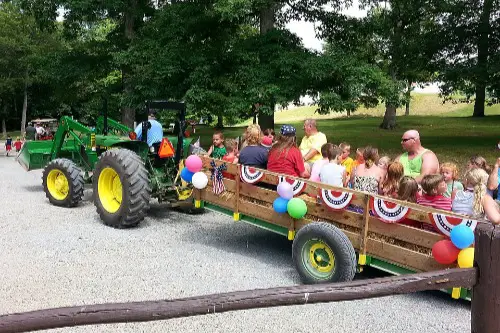
Roaring Run has roots stretching back to the 1920s, when it began life as one of Pennsylvania’s oldest Boy Scout camps. Now a private-membership RV resort hidden in the Laurel Highlands, it still boasts stone lodges and buildings from that era, quietly preserving the legacy while welcoming travelers. It’s the kind of place you stumble upon and – without knowing – step into decades of history. Locals rarely mention that beneath the quiet RV sites lies rich scouting and industrial heritage.
When you park your rig here, you can almost feel the whispers of scouts and pioneers echoing off stone walls. It’s tucked between major ski and golf resorts, yet feels deeply rooted in a different era. A few walls and trail markers hold memories of early 20th-century youth adventures, and you’d never guess unless someone points it out. That makes Roaring Run feel like a private secret, whispered only to those who ask.
2. Osage Hills State Park, Oklahoma
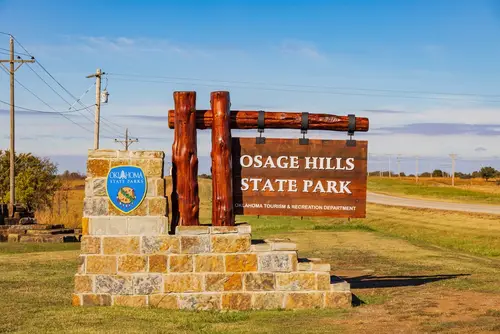
This 1,100-acre park isn’t just about streams and campsites—it was shaped by the Civilian Conservation Corps in the 1930s. Those rustic structures and facilities carry the imprint of Depression-era craftsmanship that welcomes RVers today. The CCC-built parkitecture offers both history and convenience, but it’s easy to miss if you only glance at the map. Few locals mention the park’s Depression-era origins, but that’s part of its low-key charm.
Camping here is a peaceful affair with a hidden historical layer: every picnic shelter or cabin whispers of New Deal efforts and regional pride. It’s a quiet gem where your RV presence blends seamlessly with structures born of American resilience. You might chat about fishing or birdwatching, never realizing you’re surrounded by National Register-worthy craftsmanship. That’s the kind of subtle history that doesn’t shout—it just endures.
3. Douthat State Park, Virginia

One of Virginia’s original CCC parks, Douthat was built in the mid-1930s and later declared a historic district. It’s nestled high in the Alleghenies, offering lakeside RV spots surrounded by log cabins and trails that crackle with decades-old stories. Campers tend to praise the hiking and fishing, but few know how deeply the CCC shaped this land. It’s an easy drive from nearby towns, yet still overlooks a legacy of conservation and craftsmanship.
While you sip coffee by the lake, those cabins and the lodge reflect Depression-era architecture, rustic and steadfast. Every trail you hike was likely carved with pickaxes funded by New Deal work programs. It’s history that hums quietly in the breeze, not something locals often bring up unless you ask directly. But for the RV traveler in-the-know, it’s the perfect blend of nostalgia and nature.
4. First Landing State Park, Virginia
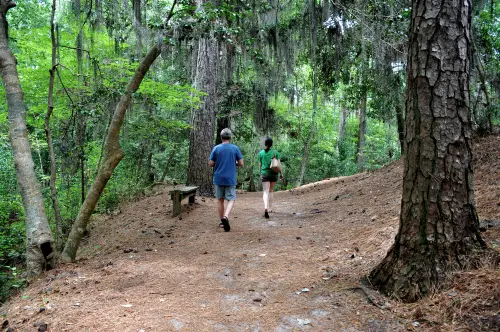
This park marks the first landing of English colonists in 1607, though most folks just think of it as a campground by the ocean. Established in the 1930s by the CCC and later listed on the National Register, it shelters RV campers near a site of national origin—the first foothold of what would become the United States. The cabins and trails still echo that layered history. It’s just outside Virginia Beach, but many beachgoers never suspect history waits behind the trees.
Parking your RV here feels both ordinary and extraordinary—beach vibes outside, colonial echoes inside. A few steps to the shore and you’re treading near where Newport’s party stepped ashore centuries ago. Most days people chat about sandcastles, rarely about that colonial debut. That blend of beachy leisure and historic depth is a delicious secret few locals share freely.
5. Phillips RV Park, Wyoming
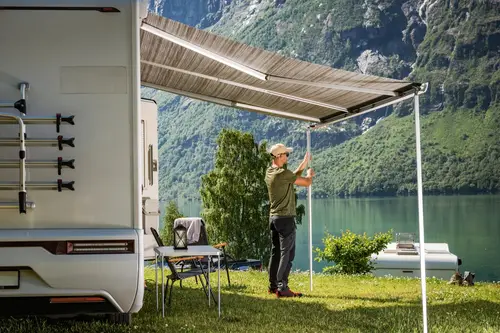
Family-run since 1936, Phillips RV Park is more than a campground—it’s a living legacy strewn across generations. The same family has kept it thriving for nearly ninety years, nurturing its growth while honoring heritage. Most people drop in, park, and move on without realizing they’re part of a long family story. The quiet lanes and mature shade trees are silent witnesses to decades of family love and outdoor hospitality.
Staying here feels like crashing at a relative’s long-lived summer retreat, where stories lurk in every corner if you’re curious enough. The family’s third or fourth generation often still checks you in, carrying forward traditions from the ’30s. It’s a human history—of people, not monuments—and while it shapes the park, locals rarely praise how much is preserved in chewy, lived family continuity. That makes parking here feel unexpectedly personal.
6. A. H. Stephens State Park, Georgia

This park centers on Liberty Hall, built by Alexander H. Stephens, a major Civil War-era figure. Beyond its stunning grounds, it includes RV campsites among historic dwellings, horse camps, and structures that echo pre- and post-war eras. The quiet lanes hold echoes of 19th-century politics and plantation life, but most visitors just see green space and cabins. Rarely is the park’s connection to a Confederate vice president and his estate front and center.
Camping here invites reflection under oak canopies whose roots predate most of us. You pitch your RV amid rooms full of books, a marble statue marking a man who shaped—contentiously—American history. Travelers chat about fishing or horseback rides, not the politics that once molded the land. Yet that tension hangs gently in the air, if you lean in.
7. Four Mile Old West Town & RV Campground, South Dakota

Tucked just outside Custer, this campground doubles as a preserved Old West town, with buildings and relics from the frontier era. It’s part museum, part campsite—and part local secret. People pitch their RVs among saloons and storefronts that look straight out of a gold rush postcard. Most locals think of it as a tourist novelty; they don’t often dwell on its preservation of frontier architecture and ambiance.
Staying here feels like time-travel with hookups. You wake to creaking wood floors while hooked up to power and water, in a setting built to echo 19th-century hustle. It’s playful, almost kitschy—but underneath sits a thoughtful preservation effort of frontier life. That blend of fun and fidelity makes Four Mile feel like part Disneyland, part history lesson—not overhyped, but quietly clever.
8. Fort McAllister State Historic Park, Georgia
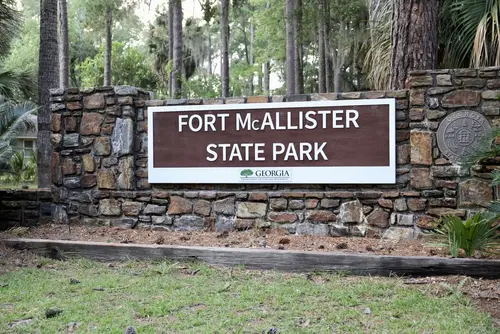
This beautiful campground lies just south of Savannah, nestled into coastal marshlands where remnants of Civil War-era earthworks still stand. You park your RV steps away from bunkers, old cannon placements, and a Civil War museum, turning a weekend away into a walk through history. Most locals chat about the great fishing pier or kayak options but never mention how the park preserves a battlefield left quiet and weathered. The unassuming campgrounds mask layers of story and struggle.
Pitch your rig and wander the trails, where live oaks and Spanish moss shade trench lines dug nearly 160 years ago. The cannons and ovens visible above ground whisper stories of epic Confederate defenses. It’s equal parts nature and narrative, all delivered without a billboard. Camping here feels like your quiet invitation into a chapter of Southern history that still lingers.
9. Trail of Tears State Park, Missouri
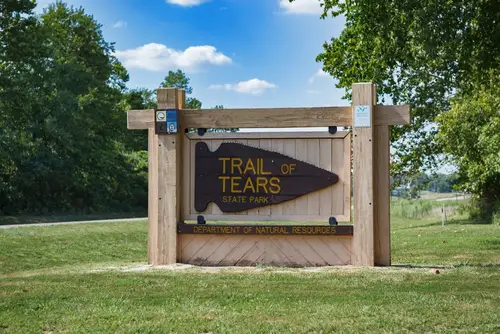
Few campgrounds carry as heavy a story as this one, sited at the crossing point where thousands of Cherokee passed during their forced removal in 1838–39. The visitor center and surrounding trails preserve memory alongside scenic landscapes, blending the sobering and the serene. Casual RV travelers may flock here for hiking or cross-country skiing, not realizing they’re camping in a literal historical waypoint. That quiet absence of conversation is what makes the place a profound, low-key discovery.
Set up your RV and tread paths where history flows beneath your tires. The museum grounds hold exhibits that foster emotional reflection—history made real in wind through the trees. Despite that, most guests talk about the beauty, not the burden of history etched here. The park remains a meaningful, hushed classroom for those who choose to listen.
10. Ingalls Homestead, South Dakota
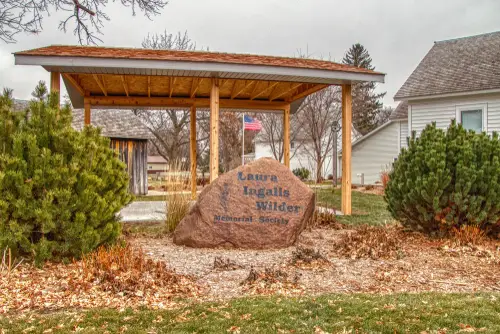
In the small prairie town of De Smet, you can camp right where Laura Ingalls Wilder spent key chapters of her life—When the Prairie Wind carries, it doesn’t just whisk dust; it carries Little House nostalgia. The RV sites sit amid the homestead reconstructed to mirror her world, surrounded by prairie, history, and homely authenticity. Most visitors come for a retro “Little House” experience, not musing on how literary history shaped American consciousness. That’s what makes it special: a place too close to home to feel legendary, yet undeniably rooted in story.
Park your RV beside replica log cabins or even a covered wagon outfitted with modern comforts, and feel that frontier-era stillness settle in. You’ll walk paths that young Laura walked, where stories sprang from daily chores and prairie wind. Few locals realize campers are neighbors to the origins of five Wilder novels. Staying here feels like stepping into literature—with hookups.
11. Amana RV Park & Event Center, Iowa
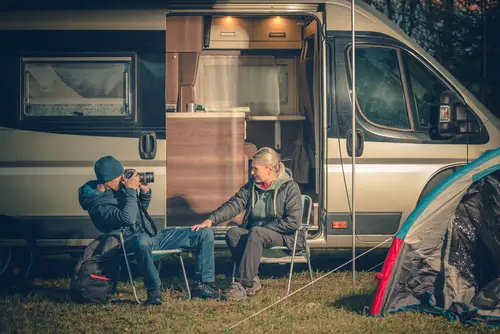
Tucked within the Amana Colonies—villages founded in the 19th century by German immigrants—this RV park places history right in your backyard. Your rig is parked amid National Historic Landmark buildings filled with centuries of communal craftsmanship and tradition. Tourists stroll past and marvel at heritage breweries or quilt shops, but don’t always connect the dots back to the RV park’s living cultural context. That makes every stay a chapter in a quiet but vibrant German-American tale.
When you wheel in, you’re not just checking into an RV site—you’re parking inside a story of religious refugees turned artisans. The shingle roofs, shared workshops, and preserved architecture aren’t illusions—they’re functioning heritage. Locals shop and dine but rarely note how RV travelers are part of that continuum. Marking your calendar to stay here means marking your map with culture, comfort, and continuity.
12. Elmore State Park, Vermont
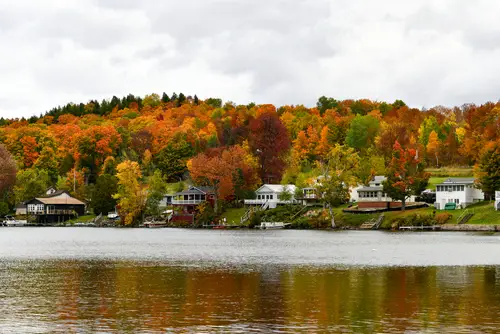
This peaceful Vermont site offers a 59-site campground beside Lake Elmore, with rustic CCC-built structures dating back to 1934. Few visitors realize that those camp shelters, picnic buildings, and even the landscape itself were shaped by Depression-era craftsmanship—and later earned listing on the National Register of Historic Places. Most RVers arrive for the lake views and hiking, not the quiet legacy of Civilian Conservation Corps handiwork beneath their feet. That under-the-radar gravitas is what earns it a spot on this list.
You’ll wake to sun glinting off water, stained by history and conservation in equal measure. The cabins and bathhouses whisper stories of Artisans in Work Corps jackets carving out public places in hard times. Camp conversations drift toward fishing and foliage, not historical registers—but the park, and its history, is all still there. Quiet and inviting, Elmore offers both a nature escape and a nod to America’s resilient past.
This post 12 RV Parks With Histories Locals Don’t Talk About was first published on Greenhouse Black.
